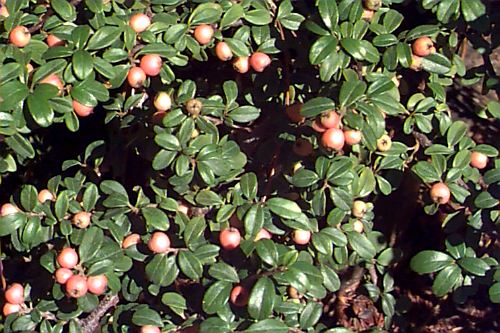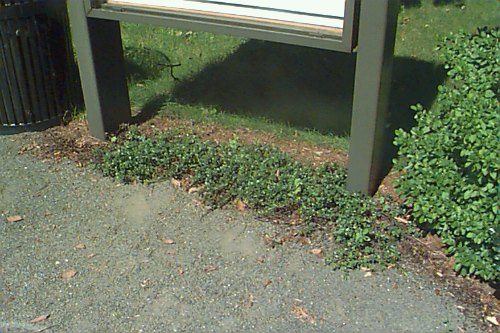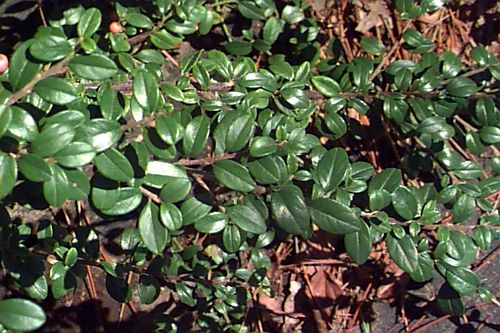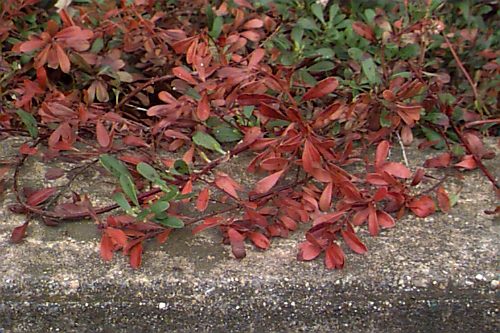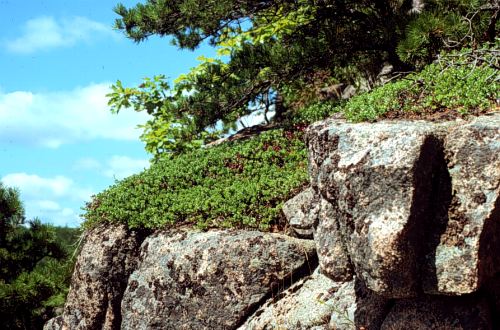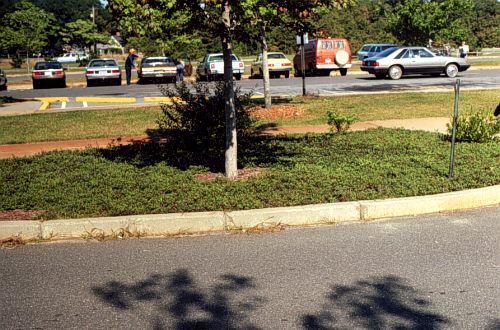Arctostaphylos uva-ursi
Bearberry, Kinnikinick
Ericaceae
ExpandHabitat
- native to northern regions of Europe, Asia and North America
- in United States, found as far South as northern California and Virginia
- tends to occur naturally in sandy or rocky soil
- zone 3
Habit and Form
- an evergreen groundcover
- low growing forming dense, spreading mats
- individual plants can be 6" to 12" tall by 15" diameter
- fine texture
- slow growing
Summer Foliage
- alternate, simple leaves
- evergreen, with dark green color
- glabrous to shiny
- 0.5" to 1.25" long and 0.25" to 0.5" wide
Autumn Foliage
- evergreen
- may turn a bronze or a reddish color in the fall and winter
Flowers
- white to pink color
- small, urn-shaped flowers
- blooms in April and May
- interesting up close, but not overwhelmingly showy
Fruit
- bright red berries (drupe)
- develop in late summer and persist
- 0.25" to 0.33" diameter
- best viewed up close
- not highly showy
Bark
- stems are fine so bark is not a major feature
- older stems have thin exfoliating bark
- loose bark is silvery and papery, while base bark is purplish red.
Culture
- can be difficult to transplant and establish
- probably prefers a well-drained, sandy soil
- acidic soils may be best
- full sun to very light shade
- do not fertilize
- does not need pruning
Landscape Use
- salt tolerant, so good seaside groundcover
- is effective plant along a rock wall where it can cascade over the edge
- useful on sandy slopes and banks
Liabilities
- hard to establish
- can develop winter burn from sun and wind when cold
- does not like excessive summer heat
- can develop foliar diseases when stressed (leaf spot)
ID Features
- evergreen groundcover
- small, dark green, alternate leaves
- small white urn-shaped flowers in spring, red fruit in late summer
- papery exfoliating bark with purple-red base color
- thin, sprawling stems
Propagation
- by stem cuttings
- seed require scarification and stratification
Cultivars/Varieties
'Massachusetts' - A disease resistant selection with smaller leaves than the species. Tends to flower and fruit well. Raised on the west coast of U.S. from Massachusetts seed. Very common in the trade.
'Point Reyes' - Features good, deep-green foliage color and leaves closely-spaced on the stems. Supposedly more heat and drought tolerant than other forms.
'Vancouver Jade' - A University of British Columbia Botanical Garden introduction. Has larger, glossier leaves than typical. Foliage develops a nice wine color in the fall. A more vigorous grower than most A. uva-ursi.





